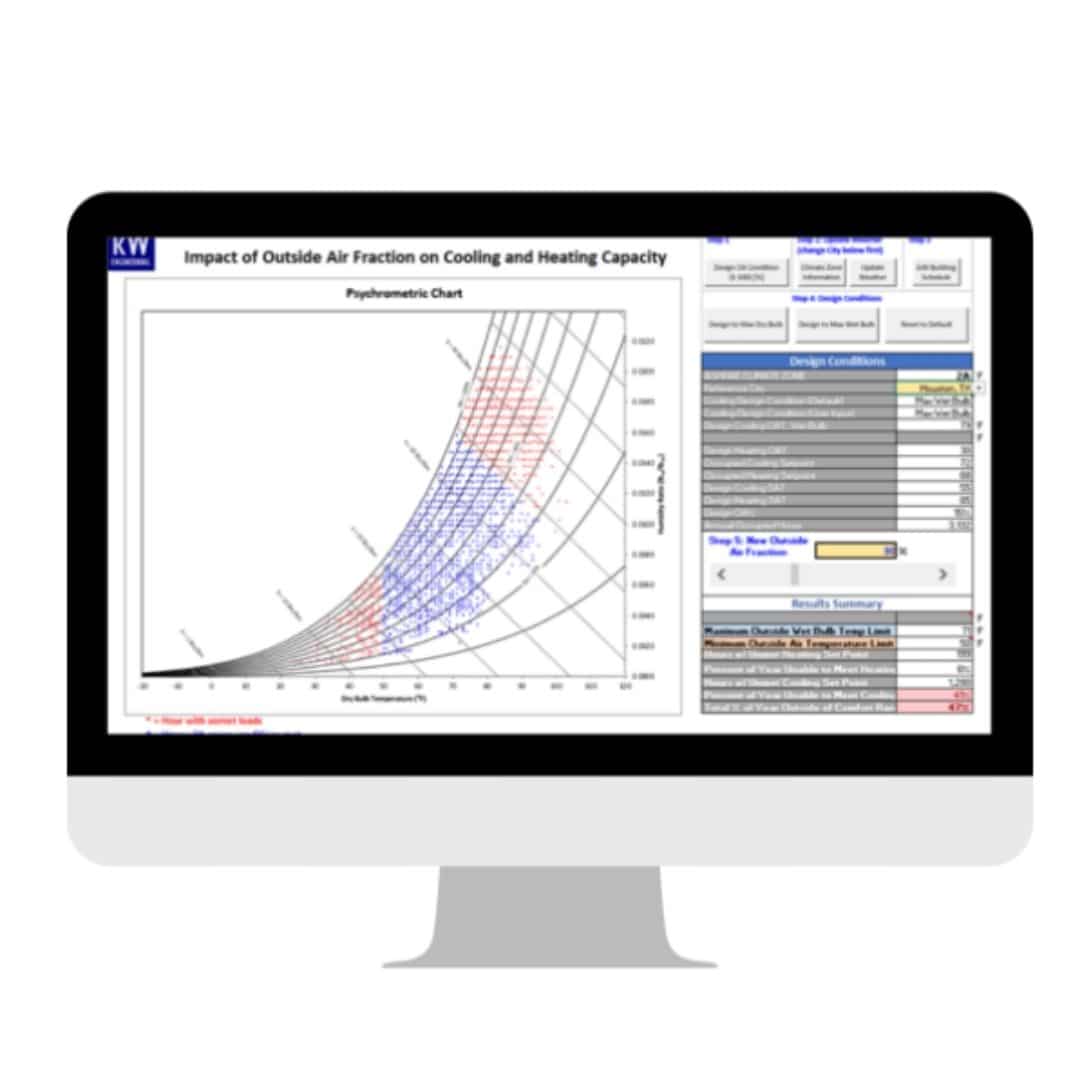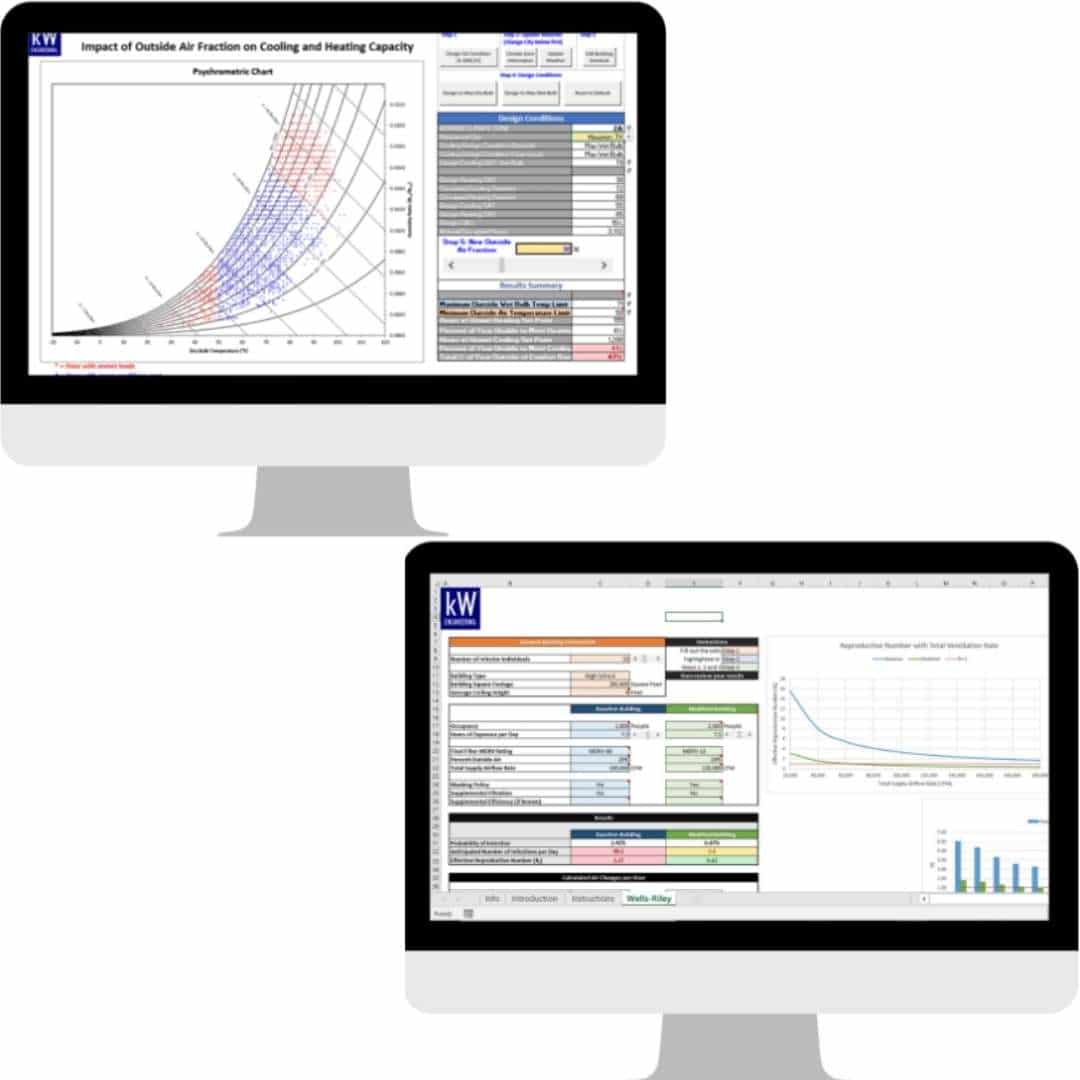ventilation load
outdoor air rate impact calculator
ASHRAE’s guidance for operating buildings during the COVID era encourages building operators to adjust their outside airflow intake rate (OA %) as much as their cooling and heating systems can handle, up to 100% if possible.
This quick analysis tool helps building operators across the U.S. understand the impact of modifying the OA % on HVAC systems before making changes.
Using the tool, users can adjust their OA % and observe space conditioning (cooling and heating) limitations based on outdoor air temperatures. The video below provides step-by-step instructions.

Download the outside air impact calculator using the form below.
By submitting my email, I agree to receive occasional emails from kW Engineering.
want to reduce the risk of COVID-19 infection?
video tutorial
how to use the calculator

from our engineers
developer notes
It's important to note increasing outside airflow into a building, especially when it is hot, cold, or humid outside, could make it uncomfortable if the HVAC systems can’t “keep up” and can cause conditions that allow viruses, like coronavirus, to live longer in the air.
Read more about using this tool for effective building operations mitigating COVID.
inputs
This calculator tool uses a few basic building inputs to determine the design cooling and heating conditions and include the following.
Design outside airflow rate (% of supply air flow).
This can be found in your mechanical drawings, test and balance (TAB) reports, or commissioning documentation, among other places.
Reference City.
Select the reference city closest to your building location. You can check the ASHRAE Climate Zone map in the tool to check which climate zone your building falls into (2A, 3C, etc.).
Building Schedule.
Input your typical weekly schedule to narrow the analysis down to the hours that matter most (when your HVAC systems are running!). The tool does not account for pre-cooling or pre-heating your building to help meet loads – a strategy that could be used to help expand the operating hours somewhat.
Cooling Design Scenario – Max Dry Bulb vs Max Wet Bulb.
Cooling systems are designed to handle either the maximum expected outdoor air temperatures or the maximum dehumidification load for your climate zone (max wet bulb).
Our calculator automatically uses the default design scenario for your given climate zone, but users can override the default to align the calculator with their particular building’s design. If you don’t know whether your cooling system is designed for maximum dry bulb temperature or maximum wet bulb temperature, then we recommend leaving this selection as the default.
state version
California only tool
Form more granular climate zone data, download the previous version of the Outside Air Ventilation Load tool which has only California weather data.
By submitting my email, I agree to receive occasional emails from kW Engineering.



